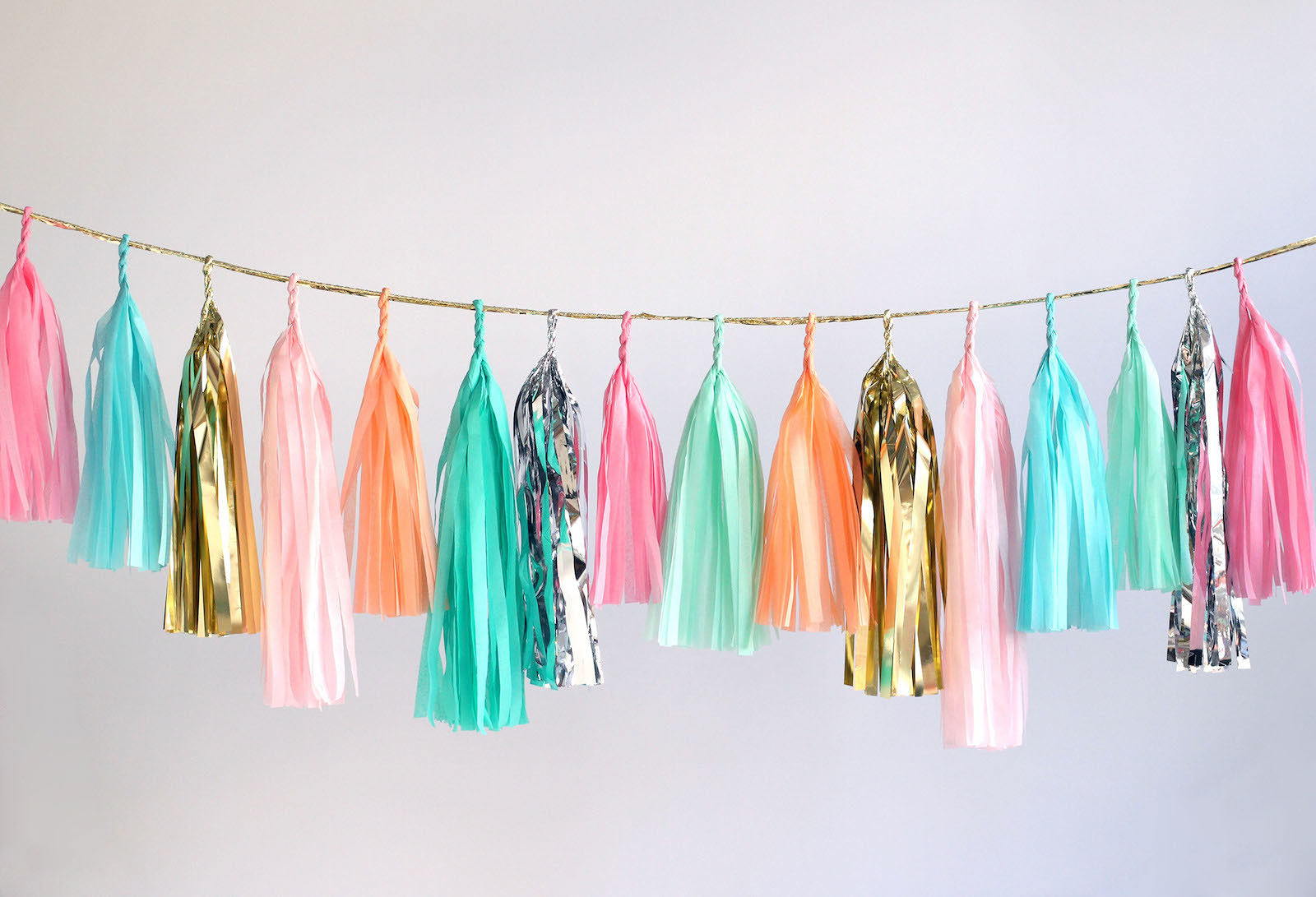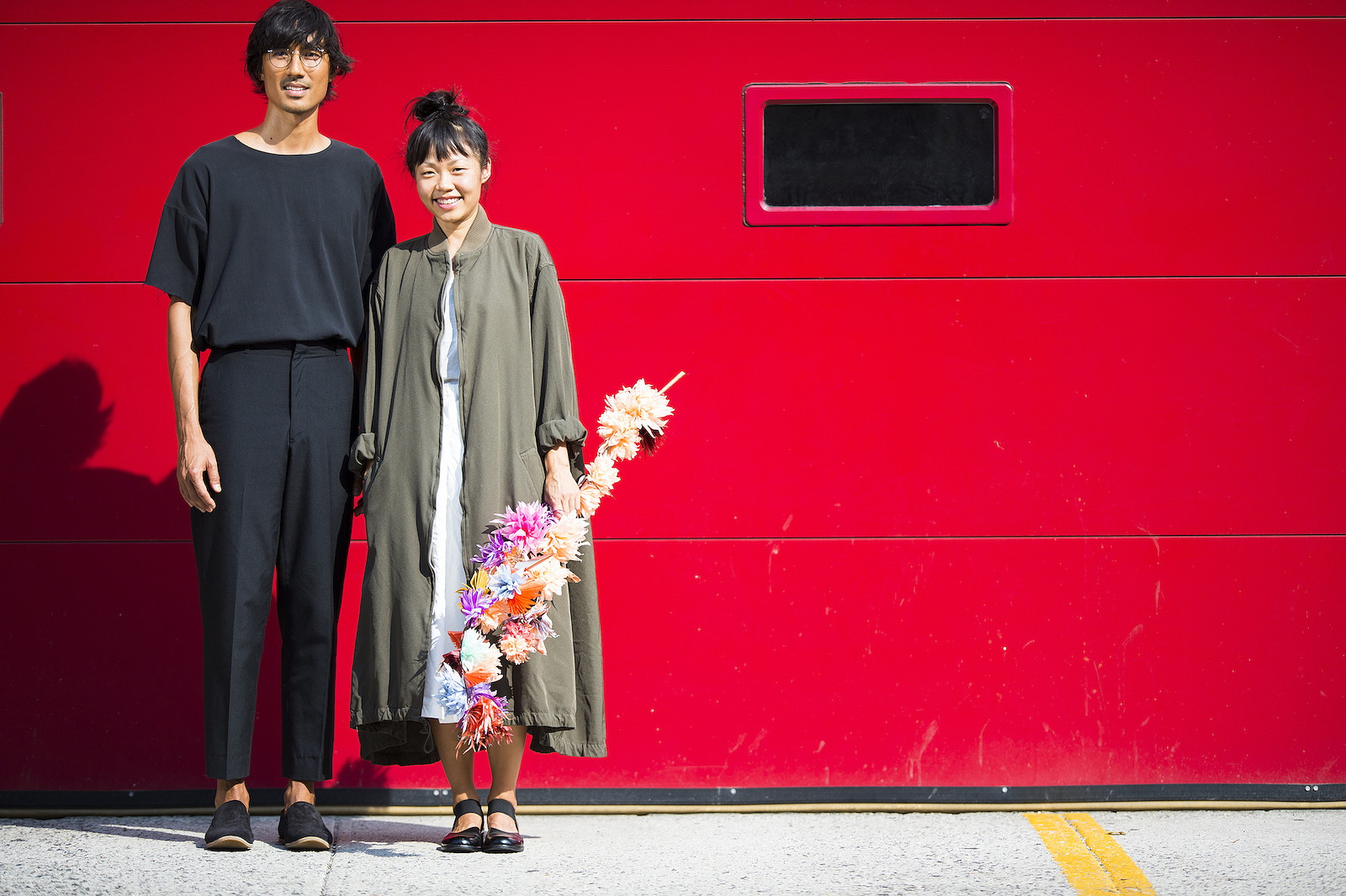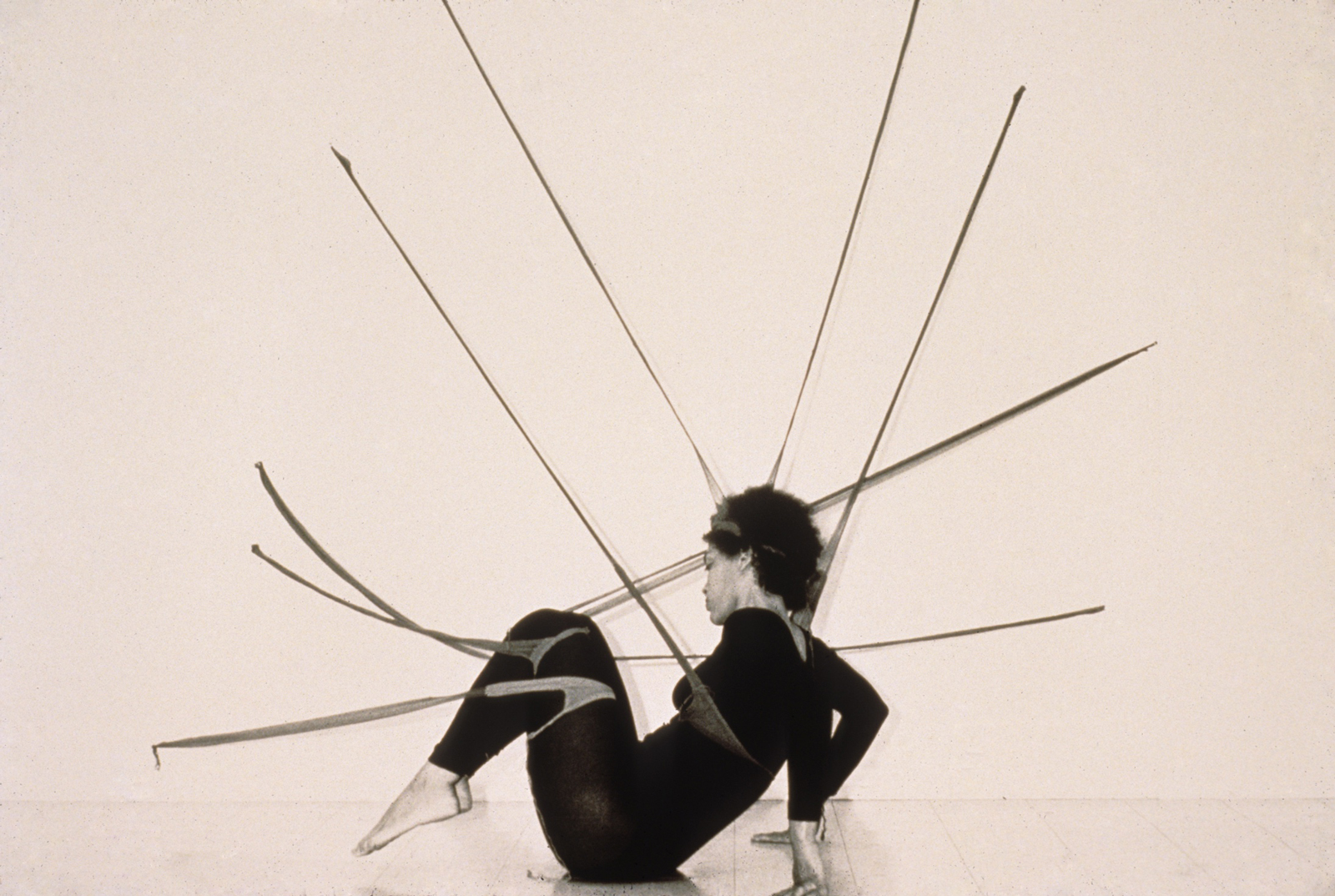Text and Interview: Alec Coiro
Photos: Julie Nick and Courtesy of Confetti System
Have you ever gone to an event or entered a space that felt special in an intimate, personal way? That felt like care and craft had gone into designing it? Where you could almost see the hands at work on the designs that were produced? If you have, there’s a good chance it was designed and built by Julie Ho and Nicholas Anderson of Confetti System.
Julie and Nicholas began with a shared background in the arts and a mutual interest in piñatas. This interest was complemented by their trademark hand-cut confetti, and in the alchemy of the combination the Confetti System aesthetic was born.
We talked to the design duo and they took us through their origin story and tell us about their process. We also uncover a few interesting tidbits, like did you know that Confetti System started out as a band!?
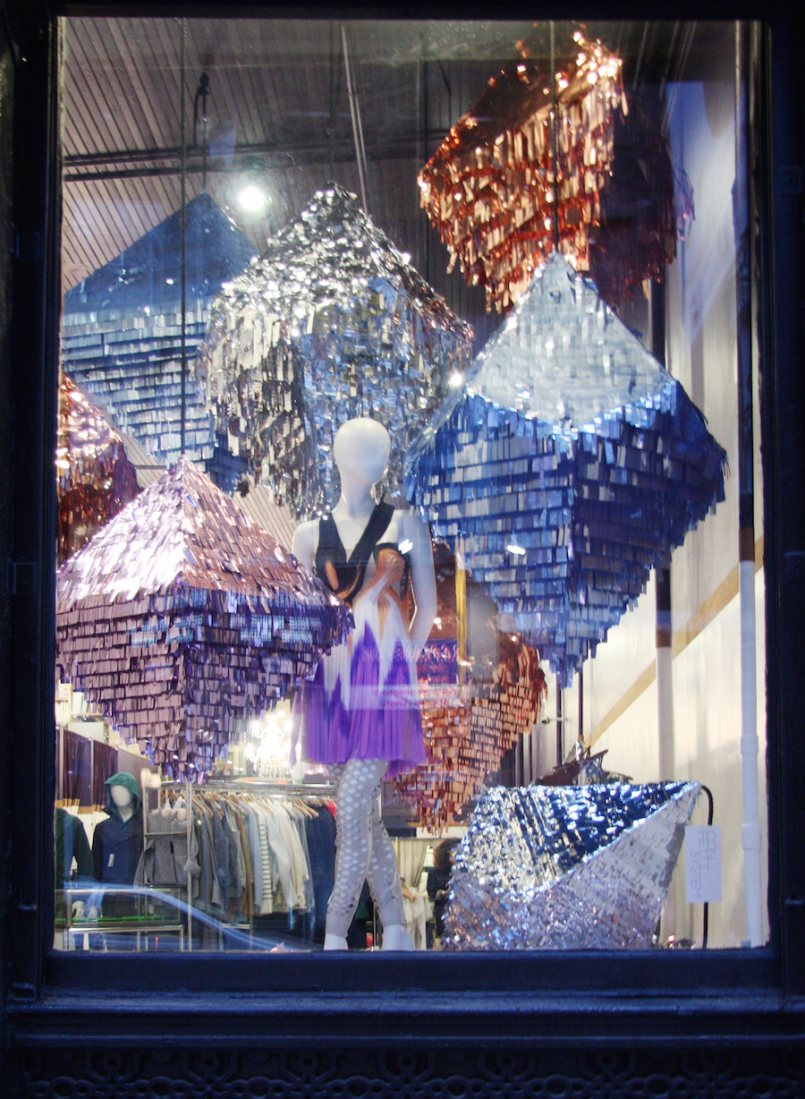
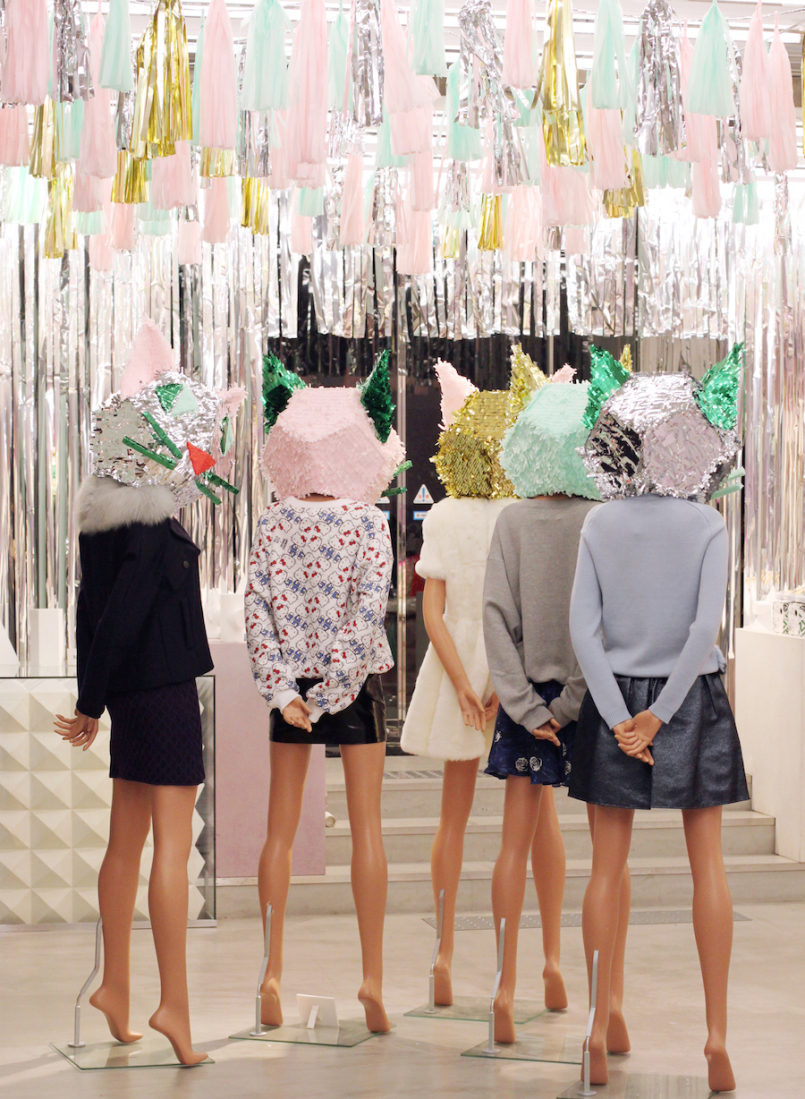
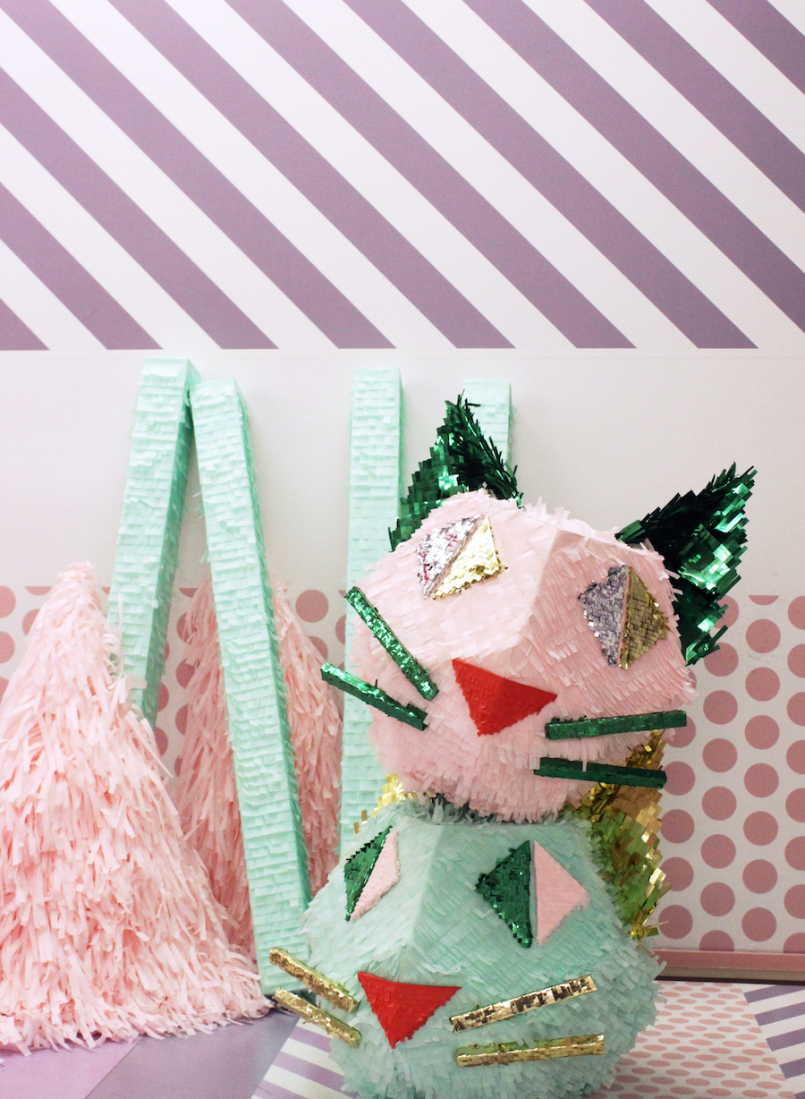
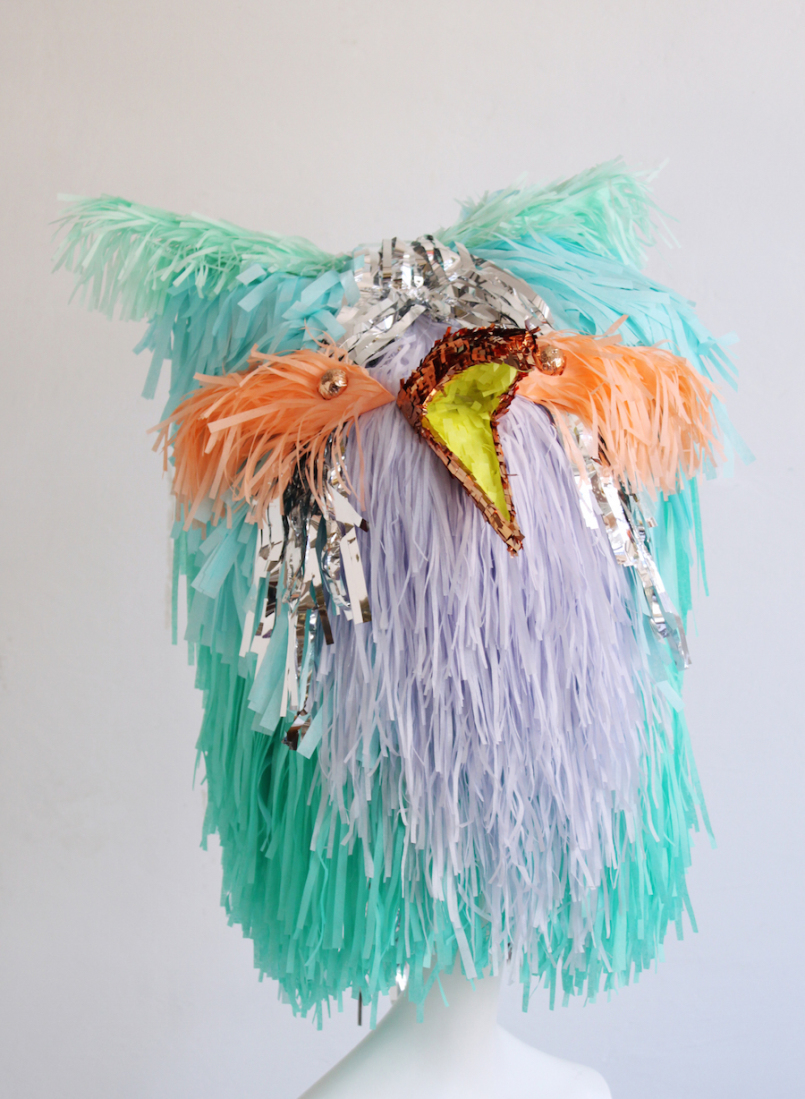
Can you tell us about the origins of Confetti System? What was your first project and how did it come about?
We started working together as CONFETTISYSTEM back in 2008. We began creating elaborate sets and environments for friend’s parties and performances using simple materials like tissue paper and metallic foil. While planning decorations for a performance, we remembered how fun piñata parties were as children and wanted to recreate that feeling of suspense and pleasure. The idea of transforming a space and mood for one night, adding an energy to the space and leaving people with a memory was very interesting to us. Our work is informed by traditional celebrations as well as exploring the boundaries of what a celebration is and how it can be materialized by creating heightened experiences through interactive objects, installations, and sound.
Our first installation was for our friends at Opening Ceremony, to celebrate Cinco De Mayo at the Howard Street store in NYC. We filled the window with a dozen oversized pinatas surrounding an amazing Rodarte dress and covered the floor with our hand-cut confetti. It was the first time we really saw the amazing combination of the forms and the material come together in a big way. They really let us take over the window, so it was a great opportunity to push the installation as far as we could.
Is it a challenge to both innovate and at the same time maintain the Confetti System look?
Yes and No? The aesthetic and materials we fell in love with were very deeply ingrained in both of us at a young age. It’s a mix of our shared cultural memories growing up in Queens and Honolulu, in that way everything we produce is very intuitive but yes it’s a good challenge to step out of our heads to take an objective look at our work to keep pushing it forward.
How much design freedom are you usually given for a project?
We’re very lucky, we are given quite a bit of freedom when working with clients. Most people who approach us are familiar with our specific visual language. So in a sense they know what they’re getting. It’s been amazing to see how our aesthetic is translated, it can transform to compliment different brands, projects and seasons.
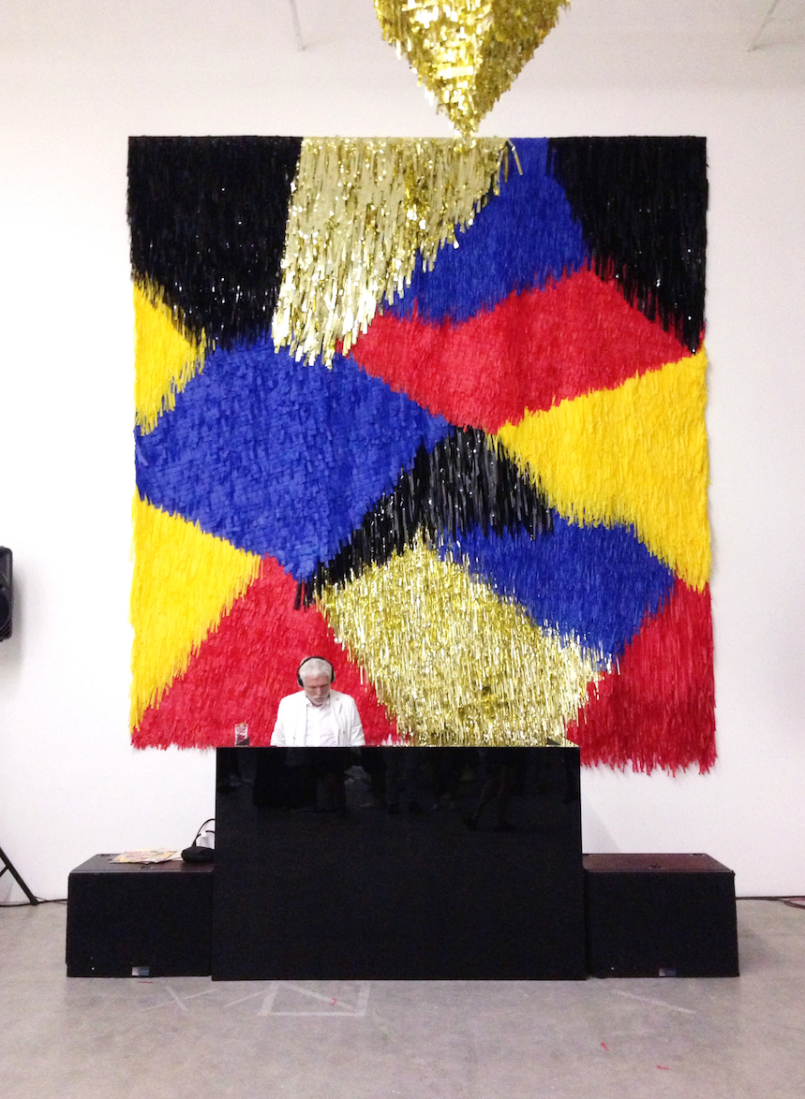
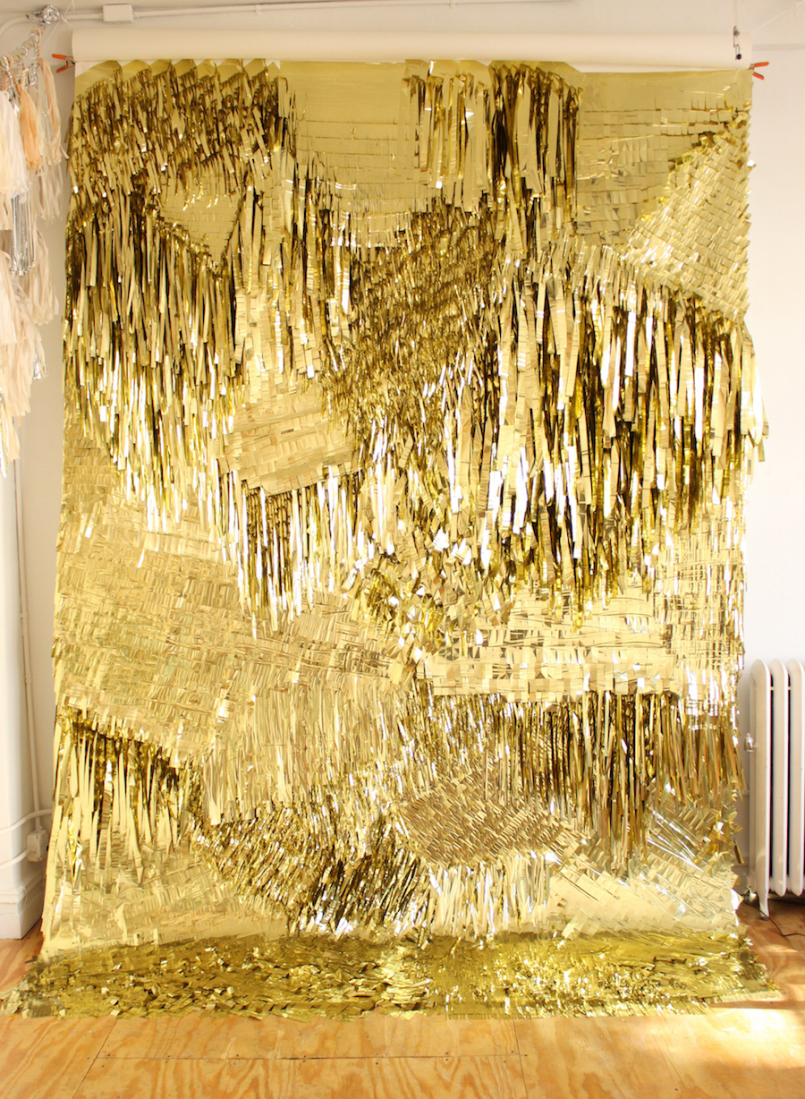
Our work is informed by traditional celebrations as well as exploring the boundaries of what a celebration is and how it can be materialized by creating heightened experiences through interactive objects, installations, and sound.
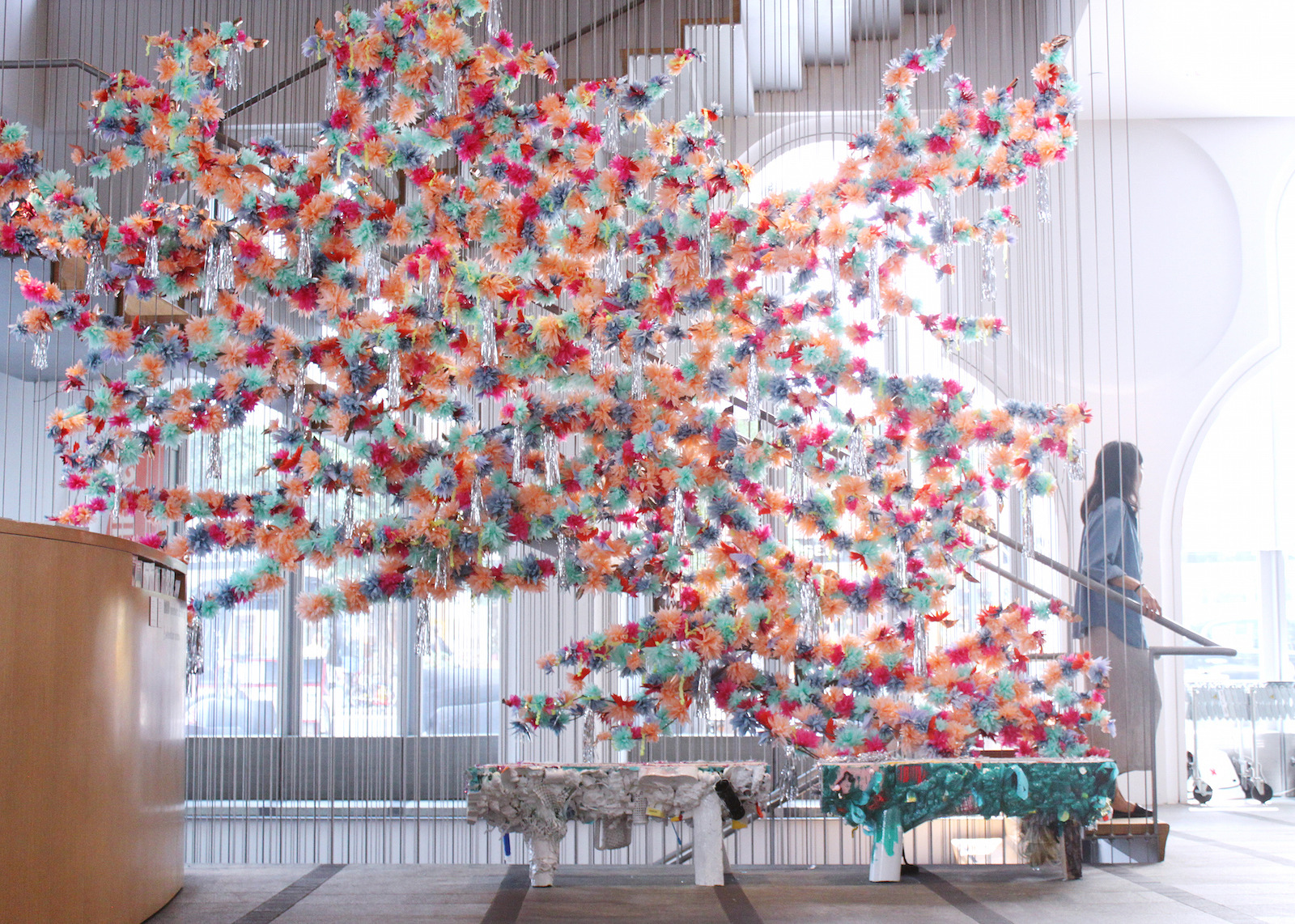
I became a fan seeing your work installed in stores and at parties, but I understand you also sell individual Confetti System objects? Is this a new aspect of what you do and how does it relate to your party systems?
Yes we have always offered individual objects. Our pinatas and garlands were the very first series of objects we created and photographed. We experimented with established conceptions of what a “party decoration” is and what it could become. We both have backgrounds in set design so it was natural for us to see what kind of worlds and environments we could create with them. We love the idea that our objects get sent all over the world and are used in so many different ways either kept for years or broken at a party.
Have you guys always been crafty? Do you have craft backgrounds?
Yes! And we both have art school backgrounds. Nick studied ceramics and graphic design and Julie studied sculpture and photography. We’ve both always loved making things with our hands since we were very young and have a great appreciation for the hand-made.It is satisfying to invest a great deal of labor and time into an object, even one made of paper.We were actually both editors at Martha Stewart Living, we did a lot of set design and craft projects for the magazine.
Your name “Confetti System” somehow sums up what you do very effectively. Do you remember how you came up with it?
It’s was actually a band first, and the performances always included an installation a set or some handmade visual element. When the members disbanded the name stuck when we continued pursuing the installation element.
